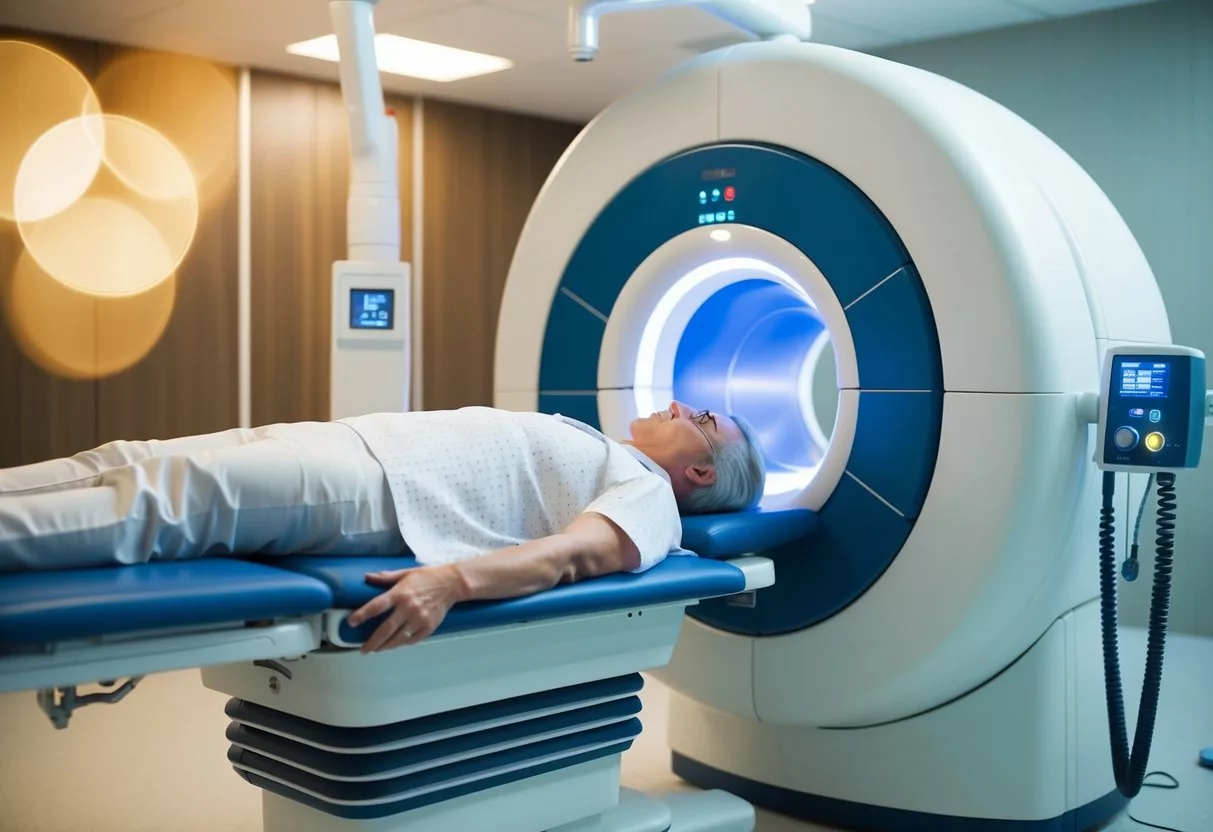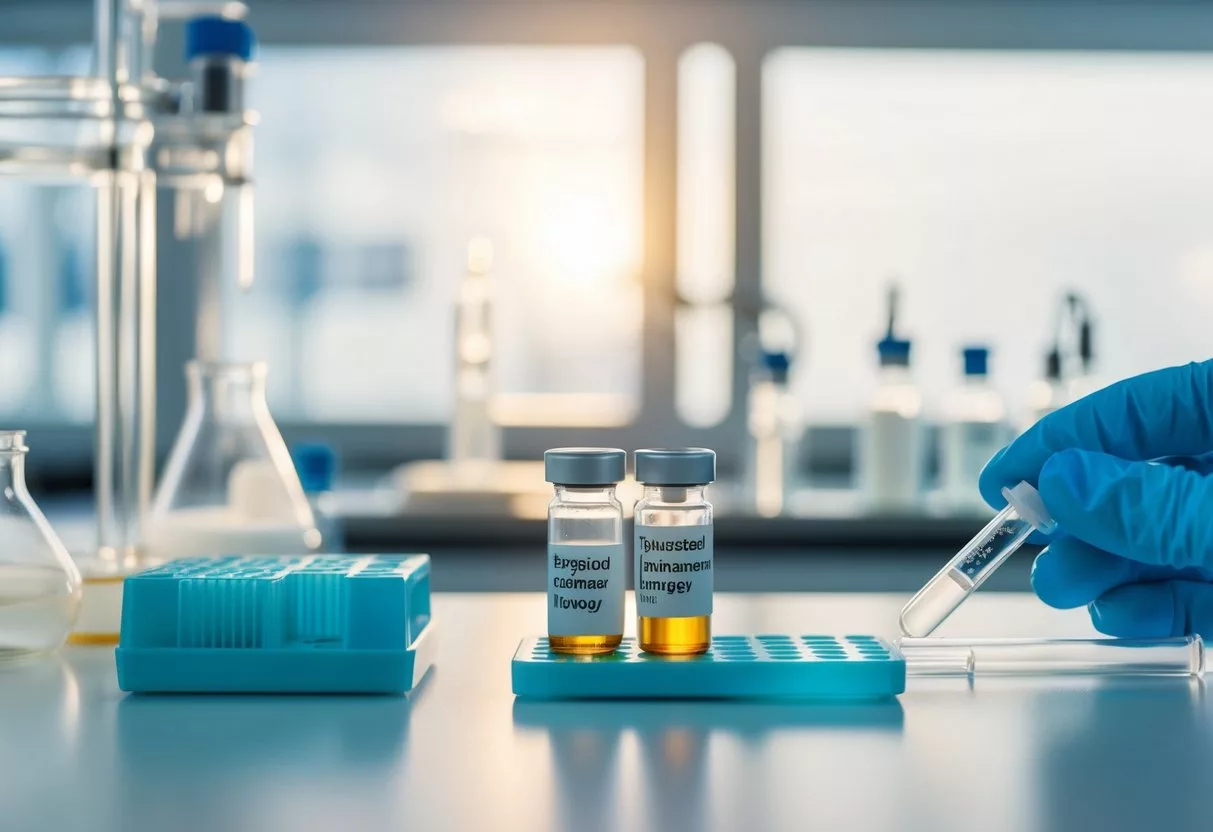Cancer affects millions of people worldwide. Fortunately, many treatment options[1] exist to fight this disease. These range from surgery to remove tumors to therapies that target cancer cells throughout the body.

The main types of cancer treatments are surgery, radiation therapy, chemotherapy, immunotherapy, targeted therapy, hormone therapy, stem cell transplant, and precision medicine.
Each option works differently to destroy or slow the growth of cancer cells.
Doctors often use a mix of treatments based on the type and stage of cancer.
Choosing the right treatment plan can feel overwhelming. It’s important for patients to talk with their doctors about the goals and risks of each option[2].
Together, they can make informed decisions about the best approach. New research keeps improving cancer care, giving patients more hope for effective treatment.
Understanding Cancer and Diagnosis

Cancer is a group of diseases that involve abnormal cell growth. Proper diagnosis is key to determining the best treatment approach.
Types of Cancer
Cancer can affect almost any part of the body. Common types include breast, lung, and colorectal cancer[3]. Blood cancers like leukemia and lymphoma impact blood cells and the immune system.
Skin cancers develop on the outer layer of skin. Brain tumors form in the central nervous system. Prostate cancer affects men, while ovarian cancer impacts women.
Each type of cancer behaves differently. Some grow slowly, while others spread quickly. Understanding the specific type helps guide treatment choices.
Diagnosing Cancer
Cancer diagnosis starts with a thorough physical exam[4]. Doctors check for lumps or other signs of disease. They also review medical history and symptoms.
Blood tests can reveal cancer markers or abnormal cell counts. Imaging tests like X-rays, CT scans, and MRIs help locate tumors.
A biopsy is often needed to confirm cancer. This involves taking a small tissue sample for lab testing. Pathologists examine the cells under a microscope to determine if cancer is present.
Genetic testing may be done to check for inherited cancer risk.
This can guide prevention and screening plans for patients and their families.
Surgical Treatment Options

Surgery plays a key role in treating many types of cancer. It can remove tumors and help diagnose the extent of disease. Surgical procedures are often combined with other treatments for the best results.
Cancer Surgery
Cancer surgery[5] aims to remove tumors from the body. Surgeons may take out entire tumors or parts of tumors to reduce their size. This is called debulking.
Some common goals of cancer surgery include:
• Removing all visible cancer
• Taking out tissue for testing (biopsy)
• Easing symptoms
• Repairing damage caused by tumors
Different surgical techniques may be used:
- Open surgery with large incisions
- Minimally invasive procedures with small cuts
- Laser surgery
- Cryosurgery that freezes cancer cells
The type of surgery depends on the cancer’s location and stage. Surgical oncologists[6] specialize in cancer operations. They work with other doctors to plan the best approach.
Possible side effects include pain, infection, and bleeding. Recovery time varies based on the extent of surgery. Many patients need additional cancer treatments after surgery.
Radiation Therapy

Radiation therapy uses high-energy beams to destroy cancer cells. It can be given externally or internally to treat many types of cancer.
External Beam Radiation
External beam radiation therapy[7] delivers radiation from a machine outside the body. Patients lie still on a table while the machine moves around them. Treatment sessions are quick and painless.
Common types include:
- 3D-conformal radiation therapy
- Intensity-modulated radiation therapy (IMRT)
- Image-guided radiation therapy (IGRT)
Doctors carefully plan treatments to target tumors while sparing healthy tissue. Most patients get radiation 5 days a week for several weeks.
New techniques like proton therapy can deliver radiation more precisely. This may reduce side effects for some patients.
Radiation Side Effects
Radiation can cause both short-term and long-term side effects. These vary based on the treatment area.
Common short-term effects include:
- Skin irritation
- Fatigue
- Hair loss in the treatment area
Long-term side effects[8] may develop months or years after treatment. These can include:
- Changes in skin texture
- Lymphedema (swelling)
- Infertility
- Secondary cancers
Side effects often improve after treatment ends. Patients should discuss concerns with their doctors. Medications and other therapies can help manage many side effects.
Chemotherapy

Chemotherapy uses strong drugs to kill cancer cells. It’s a key part of many cancer treatment plans. The drugs work by stopping fast-growing cells from dividing.
Chemotherapy Drugs
Chemotherapy drugs[9] come in many types. Doctors pick the best ones for each patient. Some common drug classes are:
• Alkylating agents
• Antimetabolites
• Plant alkaloids
• Topoisomerase inhibitors
These drugs can be given in different ways:
• Through an IV into a vein
• As pills taken by mouth
• As shots under the skin
Chemotherapy is often given in cycles. A cycle includes treatment days and rest days. This lets the body recover between doses.
Managing Chemotherapy Side Effects
Chemotherapy can cause side effects[10] because it affects healthy cells too. Common side effects are:
• Nausea and vomiting
• Fatigue
• Hair loss
• Mouth sores
• Diarrhea
Doctors have ways to help with these issues. Anti-nausea drugs can ease stomach problems. Special mouthwashes help with sores. Patients can try wigs or scarves for hair loss.
Good self-care is key. Eating well and getting rest can reduce fatigue. Staying clean helps avoid infections. Patients should tell their care team about any side effects right away.
Targeted and Immunotherapy

Cancer treatment has come a long way with new options that work with the body’s own defenses. These treatments aim to fight cancer cells while sparing healthy ones.
Biological Therapy
Biological therapy[11] uses substances from living things to treat cancer. It helps the body’s natural defense system work better against cancer cells. This type of treatment can slow or stop cancer growth.
Some types of biological therapy boost the immune system. Others work by targeting specific parts of cancer cells. These treatments can be given as pills, shots, or through an IV.
Side effects vary but may include fever, chills, or skin rashes. Patients often find these easier to handle than chemotherapy side effects.
Boosting the Immune System
Immunotherapy[12] is a key part of biological therapy. It helps the body’s immune system fight cancer more effectively. This treatment can work in different ways:
- Making immune cells stronger
- Helping the immune system find cancer cells
- Stopping cancer cells from hiding from immune cells
Doctors may use immunotherapy alone or with other treatments. It can be very effective for some types of cancer.
Not all patients respond to immunotherapy. Doctors do tests to see who might benefit most. Research is ongoing to make these treatments work for more people.
Hormonal and Gene Therapies

Cancer treatments now include targeted approaches that work with the body’s systems. These therapies aim to stop cancer growth or kill cancer cells without harming healthy cells.
Hormone Therapy
Hormone therapy treats cancers[13] that rely on hormones to grow. It’s often used for breast and prostate cancers. This treatment can work in different ways:
- Stopping hormone production
- Blocking hormone effects on cancer cells
- Removing hormone-producing organs
Doctors may use hormone therapy alone or with other treatments. It can shrink tumors before surgery or reduce the chance of cancer coming back.
Side effects can occur. They may include hot flashes, bone loss, or changes in mood. The type of side effects depends on the specific treatment used.
Precision Oncology
Precision oncology uses genetic information[14] to guide cancer treatment. It looks at the unique features of a person’s cancer to choose the best therapy.
Key parts of precision oncology include:
- Genetic testing of tumors
- Identifying biomarkers
- Choosing targeted therapies
This approach can lead to more effective treatments with fewer side effects. It helps doctors pick medicines that are more likely to work for each patient.
Precision oncology is a fast-growing field. New discoveries are helping create better cancer treatments all the time.
Transplantation Therapies

Transplantation therapies offer hope for patients with certain cancers and blood disorders. These treatments replace damaged cells with healthy ones to fight disease and restore normal blood cell production.
Bone Marrow Transplant
A bone marrow transplant[15] replaces faulty bone marrow with healthy marrow. This procedure treats blood cancers like leukemia and lymphoma.
The process involves several steps:
- High-dose chemotherapy or radiation to destroy diseased cells
- Collection of healthy bone marrow cells from a donor or the patient
- Infusion of new cells into the patient’s bloodstream
After the transplant, new cells travel to the bone marrow and start making healthy blood cells. This can take several weeks.
Patients need close monitoring during recovery. They may face risks like infection or graft-versus-host disease.
Stem Cell Transplant
Stem cell transplants[16] use blood-forming stem cells to restore the body’s ability to produce blood cells. These cells can come from bone marrow, blood, or umbilical cord blood.
There are two main types:
- Autologous: Uses the patient’s own stem cells
- Allogeneic: Uses stem cells from a donor
Before the transplant, patients get high-dose chemo or radiation. This kills cancer cells and makes room for new stem cells.
The transplant itself is like a blood transfusion. New stem cells are put into the bloodstream through an IV line.
Recovery takes time. The body needs weeks or months to make new blood cells. Patients need careful medical care during this time.
Adjuvant and Neoadjuvant Therapies

Cancer treatments given before or after main surgery can improve outcomes. These therapies aim to shrink tumors or kill remaining cancer cells.
Pre- and Post-Surgical Treatments
Neoadjuvant therapy[17] is used before surgery. It helps shrink tumors and may make surgery easier. This can lead to better results for patients.
Adjuvant therapy[18] happens after surgery. Its goal is to kill any cancer cells left behind. This lowers the chance of cancer coming back.
Types of adjuvant and neoadjuvant therapies include:
- Chemotherapy
- Radiation
- Hormone therapy
- Immunotherapy
These treatments can be used for many cancers.
Breast, colon, and lung cancers often benefit from them.
Side effects vary based on the type of therapy. Patients should talk to their doctors about what to expect. The benefits often outweigh the risks for many people with cancer.
Palliative Care Options

Palliative care focuses on easing symptoms and improving quality of life for cancer patients. It offers comfort and support at any stage of illness, working alongside other treatments.
Pain Management
Pain management[19] is a key part of palliative care. Doctors use different methods to control pain:
- Medications: Opioids, NSAIDs, and other drugs
- Nerve blocks: Injections to stop pain signals
- Physical therapy: Exercises to reduce discomfort
- Relaxation techniques: Meditation and deep breathing
Palliative care teams work with patients to find the right mix of pain relief methods. They adjust treatments as needs change over time.
Palliative Treatments and Quality of Life
Palliative treatments[20] aim to ease symptoms and boost well-being. These may include:
- Radiation to shrink tumors causing pain
- Surgery to fix blockages or reduce pressure
- Nutrition support to manage weight loss
- Oxygen therapy for breathing problems
Palliative care also helps with emotional and social needs. Teams may offer:
- Counseling for patients and families
- Help with practical issues like finances
- Support for spiritual concerns
The goal is to improve daily life and comfort for patients dealing with cancer.
Supportive and Alternative Medicine
Many cancer patients seek additional therapies beyond standard treatments. These approaches aim to improve quality of life and manage symptoms. They can be used alongside conventional cancer care.
Complementary Therapies
Acupuncture[21] may help relieve pain and nausea in some cancer patients. It involves inserting thin needles into specific body points.
Aromatherapy uses scented oils to promote relaxation. Some patients find it eases stress and improves sleep.
Massage therapy can reduce tension and pain. It’s important to work with a therapist trained in oncology massage.
Hypnosis[21] may help manage anxiety, pain, and nausea. A trained therapist guides patients into a state of deep relaxation.
Some patients take supplements. It’s crucial to discuss these with a doctor, as they can interact with cancer treatments.
Lifestyle and Well-being
Exercise can boost energy and mood. Even light activity like walking can be beneficial. Patients should consult their doctor before starting a new exercise plan.
Meditation and yoga[21] can reduce stress and improve mental well-being. Many cancer centers offer classes tailored to patients’ needs.
A balanced diet supports overall health during treatment. Some patients work with a nutritionist to develop eating plans.
Support groups connect patients with others facing similar challenges. They provide emotional support and practical advice.
Art and music therapy allow creative expression. These activities can help manage stress and improve mood.
Clinical Trials and Research
Clinical trials play a key role in advancing cancer treatment. They test new therapies and help bring promising options to patients. Recent research is uncovering innovative approaches to fight cancer.
NCI-Supported Clinical Trials
The National Cancer Institute (NCI) supports many clinical trials[22] across the United States. These trials study new cancer drugs and treatment methods. They happen in phases to test safety and effectiveness.
NCI trials cover different cancer types and stages. Some focus on rare cancers that need more research. Others look at common cancers to find better treatments.
Patients can join trials to access new therapies. This gives them more options beyond standard care. It also helps advance cancer research for future patients.
To find trials, people can use online search tools[23] or ask their doctor. The NCI website lists current studies seeking participants.
Emerging Cancer Treatments
Cancer research is leading to exciting new treatments. Scientists are finding ways to help the body’s immune system fight cancer cells.
One promising area is CAR T-cell therapy. It uses a patient’s own immune cells to target cancer. The NCI is working to produce these cellular therapies[24] for more trials.
Targeted drugs are another key focus. These medicines attack specific features of cancer cells. This can mean fewer side effects than older treatments.
Researchers are also studying cancer genetics. This helps create personalized treatment plans based on a tumor’s genetic makeup.
Frequently Asked Questions
Cancer treatment involves many complex aspects. Patients often have questions about therapies, costs, and side effects. New developments in cancer care continue to emerge.
What are the most effective therapies in modern cancer treatment?
The most effective cancer therapies depend on the specific type and stage of cancer. Surgery, radiation therapy, and chemotherapy[2] remain common approaches.
Targeted therapies and immunotherapy have also become important treatment options for many cancers. These newer methods often have fewer side effects than traditional chemotherapy.
How do immunotherapy approaches assist in cancer management?
Immunotherapy boosts the body’s natural defenses to fight cancer. It works by helping the immune system recognize and attack cancer cells more effectively.
This approach can be very effective for certain types of cancer. It sometimes produces longer-lasting remissions compared to other treatments.
What developments in cancer treatment have emerged recently?
Recent developments include more precise radiation techniques and better targeted therapies. These allow doctors to attack cancer cells while sparing healthy tissue.
Gene therapy and CAR T-cell therapy show promise for some blood cancers. Liquid biopsies help detect cancer earlier and monitor treatment response.
What should patients expect regarding the cost of cancer treatment?
Cancer treatment costs vary widely based on the type of cancer and needed therapies. Many treatments are expensive, often costing thousands of dollars per month.
Insurance typically covers a large portion of costs. However, patients may still face high out-of-pocket expenses. Financial assistance programs can help in some cases.
What are the common side effects associated with cancer treatments?
Common side effects include fatigue, nausea, and hair loss. Pain, changes in appetite, and skin problems also occur frequently.
Side effects differ based on the specific treatment. Chemotherapy often causes more widespread effects[25], while targeted therapies may have more focused side effects.
Can chemotherapy be personalized to reduce side effects in cancer patients?
Doctors can adjust chemotherapy doses and schedules to help reduce side effects. They may also use different drug combinations based on a patient’s health and cancer type.
Genetic testing sometimes helps predict how a patient will respond to certain drugs. This allows for more personalized treatment plans.
References
- Types of Cancer Treatment. https://www.cancer.gov/about-cancer/treatment/types Accessed October 23, 2025
- Understanding Your Options for Cancer Treatment . https://www.cancer.org/cancer/managing-cancer/making-treatment-decisions/making-decisions.html Accessed October 23, 2025
- Treatment For Cancer | Cancer Treatment Options . https://www.cancer.org/cancer/managing-cancer/treatment-types.html Accessed October 23, 2025
- Understanding cancer: diagnosis and treatment. https://www.webmd.com/cancer/understanding-cancer-treatment Accessed October 23, 2025
- Surgery for Cancer. https://www.cancer.gov/about-cancer/treatment/types/surgery Accessed October 23, 2025
- Error Page. https://www.cancercenter.com/treatment-options/surgery/surgical-oncology Accessed October 23, 2025
- Radiation Therapy for Cancer. https://www.cancer.gov/about-cancer/treatment/types/radiation-therapy Accessed October 23, 2025
- What Goes into Planning Your Radiation Therapy . https://www.cancer.org/cancer/managing-cancer/treatment-types/radiation/basics.html Accessed October 23, 2025
- Chemotherapy. https://www.mayoclinic.org/tests-procedures/chemotherapy/about/pac-20385033 Accessed October 23, 2025
- Chemotherapy to Treat Cancer. https://www.cancer.gov/about-cancer/treatment/types/chemotherapy Accessed October 23, 2025
- Immunotherapy for Cancer. https://www.cancer.gov/about-cancer/treatment/types/immunotherapy Accessed October 23, 2025
- 403 Forbidden. https://www.cancer.org/cancer/managing-cancer/treatment-types/immunotherapy/what-is-immunotherapy.html Accessed October 23, 2025
- Hormone Therapy . https://www.cancer.org/cancer/managing-cancer/treatment-types/hormone-therapy.html Accessed October 23, 2025
- The Current Status of Gene Therapy for the Treatment of Cancer. https://www.ncbi.nlm.nih.gov/pmc/articles/PMC7987258/ Accessed October 23, 2025
- What are Stem Cell (Bone Marrow) Transplants? Know Before Treatment. https://www.mdanderson.org/treatment-options/stem-cell-transplantation.html Accessed October 23, 2025
- Stem Cell and Bone Marrow Transplants for Cancer. https://www.cancer.gov/about-cancer/treatment/types/stem-cell-transplant Accessed October 23, 2025
- Error Page. https://www.cancercenter.com/community/blog/2024/01/neoadjuvant-vs-adjuvant Accessed October 23, 2025
- Adjuvant therapy: Treatment to keep cancer from returning. https://www.mayoclinic.org/diseases-conditions/cancer/in-depth/adjuvant-therapy/art-20046687 Accessed October 23, 2025
- Palliative Care in Cancer. https://www.cancer.gov/about-cancer/advanced-cancer/care-choices/palliative-care-fact-sheet Accessed October 23, 2025
- 403 Forbidden. https://www.cancer.org/cancer/managing-cancer/palliative-care/what-is-palliative-care.html Accessed October 23, 2025
- Alternative cancer treatments: 11 options to consider. https://www.mayoclinic.org/tests-procedures/cancer-treatment/in-depth/cancer-treatment/art-20047246 Accessed October 23, 2025
- Research Areas - Clinical Trials. https://www.cancer.gov/research/infrastructure/clinical-trials Accessed October 23, 2025
- Finding a Clinical Trial . https://www.cancer.org/cancer/managing-cancer/making-treatment-decisions/clinical-trials/what-you-need-to-know/picking-a-clinical-trial.html Accessed October 23, 2025
- Cancer Treatment Research. https://www.cancer.gov/about-cancer/treatment/research Accessed October 23, 2025
- 403 Forbidden. https://www.cancer.org/cancer/managing-cancer/treatment-types/chemotherapy/questions-to-ask-about-chemotherapy.html Accessed October 23, 2025
